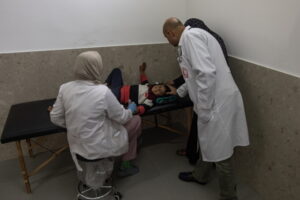The epidemiological report from EODY for April 22-28 shows a reduction in positivity for respiratory infections like SARS/CoV-2, influenza, and RSV. However, influenza positivity in the community remains high for the season. During this period, one death from COVID-19 and 9 intubated patients were reported, with one influenza case in ICU.
Influenza-like Illness (ILI) cases per 1,000 visits decreased compared to the previous week. Severe Acute Respiratory Infection (SARI) cases per 1,000 visits remained low.
Positivity for SARS-CoV-2 decreased in total tested samples. There were 83 new admissions, slightly higher than the average of the previous 4 weeks but significantly lower than the same period in 2023. Three new intubations were reported, with 9 COVID-19 patients currently intubated. One new death was recorded, with a total of 6 deaths in the past 4 weeks, lower than the same period in 2023. The most common subvariant of BA.2 remains JN.1.
Holy Thursday: The crucification, the Sacrament of the Holy Eucharist at the Last Supper
Monitoring of urban wastewater viral load indicated varied trends in SARS-CoV-2 circulation across 8 tested areas, with decreases in 2, increases in 3, and stabilisation in 3.
Influenza positivity in the community, as per the sentinel network, remains above 10%, signaling high seasonal activity, particularly with a prevalence of influenza type B. Although there’s a slight decrease from the previous week, positivity for Severe Acute Respiratory Infection (SARI) samples stays low.
A new severe ICU-admitted influenza case was reported, but no new deaths from laboratory-confirmed influenza occurred. Since the onset of influenza surveillance, 143 individuals with confirmed influenza have been hospitalised, resulting in 68 deaths. Of the 966 subtyped influenza strains, 549 were type A and 417 were type B. In recent weeks, influenza type B has dominated both in the community and hospitals.
Regarding subtyping, 531 type A strains were analyzed, with the A(H1)pdm09 subtype representing the majority at 92%, while the A(H3) subtype accounted for 8%. Respiratory Syncytial Virus (RSV) positivity remained low in both community and hospital surveillance networks.
Ask me anything
Explore related questions





